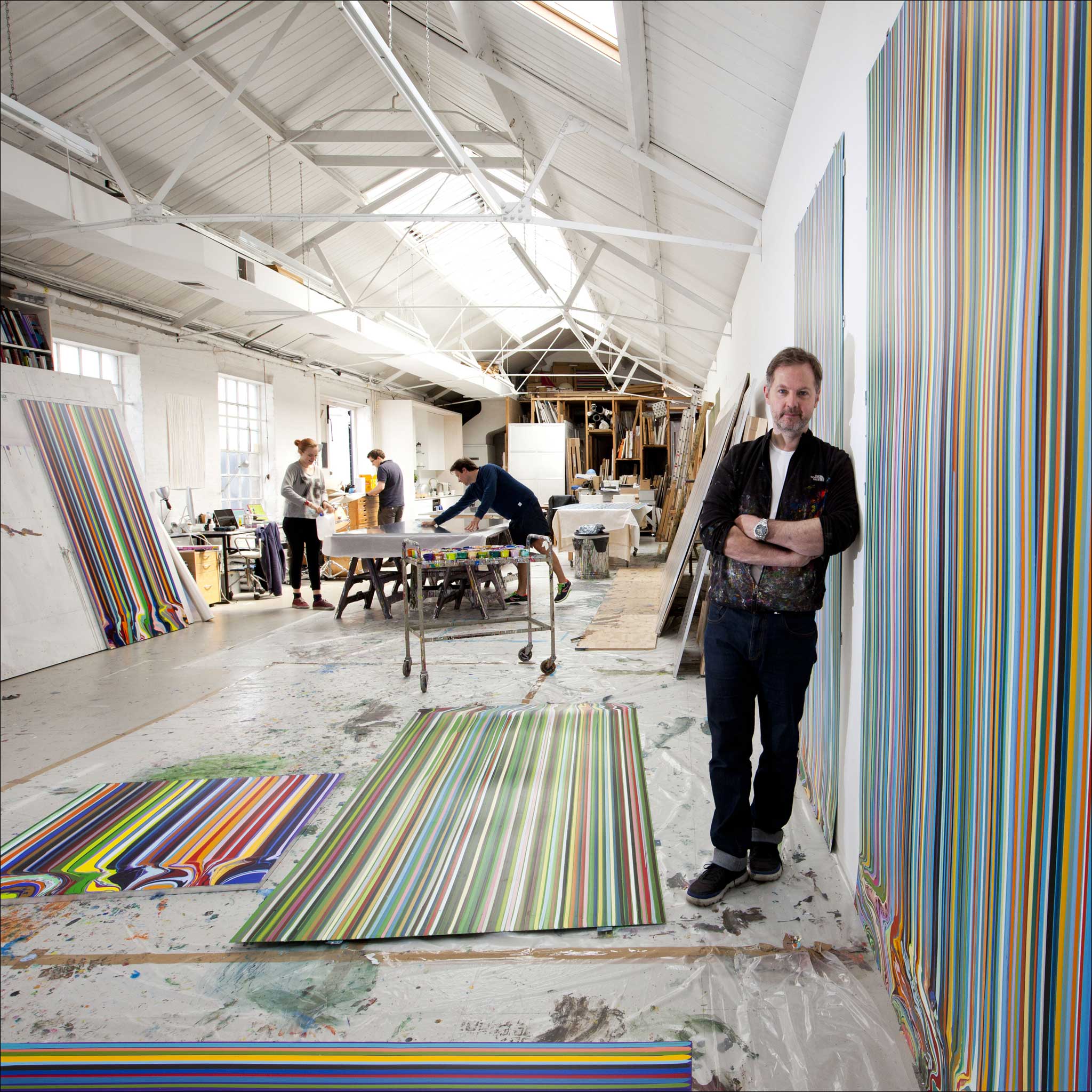Ian Davenport, painter: 'The drip is something from everyday. It is quite Duchampian'

Ian Davenport has been in this hidden gem of a studio for 10 years. Buried in a back yard in Peckham, south-east London, it was once a pattern cutter's factory and was in a state of dereliction when he and his wife, artist Sue Arrowsmith, discovered it. "I could tell it had good light," he says.
They did most of the work themselves over a year; at one point most of one of the side walls fell down. Davenport asked a friend who was helping what to do, and he replied, "We rebuild it – have you mixed cement before? No? There's always a first time."
Davenport was born in Kent in 1966. His father was an engineer and the family decamped to Northern Ireland and lived there until, at the height of the Troubles in 1973, they came back to England. He went to Goldsmiths, London, "because I didn't know what I wanted to do". It was a "happening" place then, and along with Damien Hirst, Sarah Lucas, Gary Hume, Fiona Rae and Michael Landy, he was included in the now famous Freeze show. In 1991, the YBA was nominated for the Turner Prize. "The youngest ever," he says proudly.
A new large monograph clearly lays out Davenport's development – most of it in two-dimensional painting. Like many contemporary painters, he has a strong conceptual structure for his work. Moving away from figuration as a student, he turned towards abstraction and the exploration of paint as a material. "I'm not painting, I am directing," he says. Exploring the accidental might be a better description, for one series that used industrial-sized fans and watering cans to move and pour paint. He also investigated "gravity"– poured works and dipped paintings. "The drip is not invented, it is something from everyday. It is quite Duchampian," he says.
Davenport is not precious, though. He says that his dipped paintings are more like dipping a biscuit into a cup of tea than baptism, which some critics have read into the work. He gets his inspiration from plastic curtains in kebab shops, corrugated metal roofs and tunnel entrances. "It locates it in a different place and keeps it from being too romantic."
Following a series inspired by The Simpsons is one inspired by the old masters. He has recently been admiring the artists in the National Gallery, analysing their "strange colour combinations that should not work but do."
And he is still part of the Good Ol' Hometown Boys, the group he formed with his fellow students at Goldsmiths. With an energetic drum roll on a shiny kit, he points out his allegiance to Frank Stella and his black paintings, where "clearing out" was important.
"My theme tune as an artist should be 'Paint It Black'," he adds.
Ian Davenport: Colourfall, Waddington Custot Gallery, London W1 (020 7851 2200) to 12 July; 'Ian Davenport' by Martin Filler, with an introduction by Damien Hirst, is published by Thames and Hudson (thamesandhudson.com)
Subscribe to Independent Premium to bookmark this article
Want to bookmark your favourite articles and stories to read or reference later? Start your Independent Premium subscription today.

Join our commenting forum
Join thought-provoking conversations, follow other Independent readers and see their replies